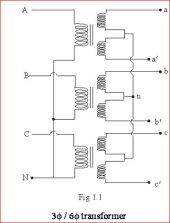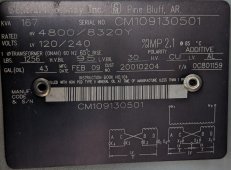Sigh, if your work wasn't done I would have asked why it's wrong to call split-phase power 2-phase, and yet call 6-phase power 6-phase. Maybe somebody else with a greater understanding than I can explain it. For starters here are some random Internet excuses to not call it 2 phase:
- This is called split phase because there is more than one voltage from a single transformer.
- Since the two phasors do not define a unique direction of rotation for a revolving magnetic field, a split single-phase is not a two-phase system.
- It’s a religious phenomenon.
- Single phase means that the AC power is delivered by one pair of wires.
- Even if you have a disturbance on the “high tension” line…. you still get a mirror image on the L1 and L2 split-phase.
- A two phase motor is used for servos.
- Two phase is where the two phases are 45 degrees apart if my memory serves me well.
- The only two phase system I have come across was 120°.
- Our utility references the 120v/240v service coming to the residence as a single phase service.
- The term “split-phase” merely refers to the split-voltage supply in such a system.
But then I still can't figure out why a 6-phase feed isn't called something like triple split phase instead

.





